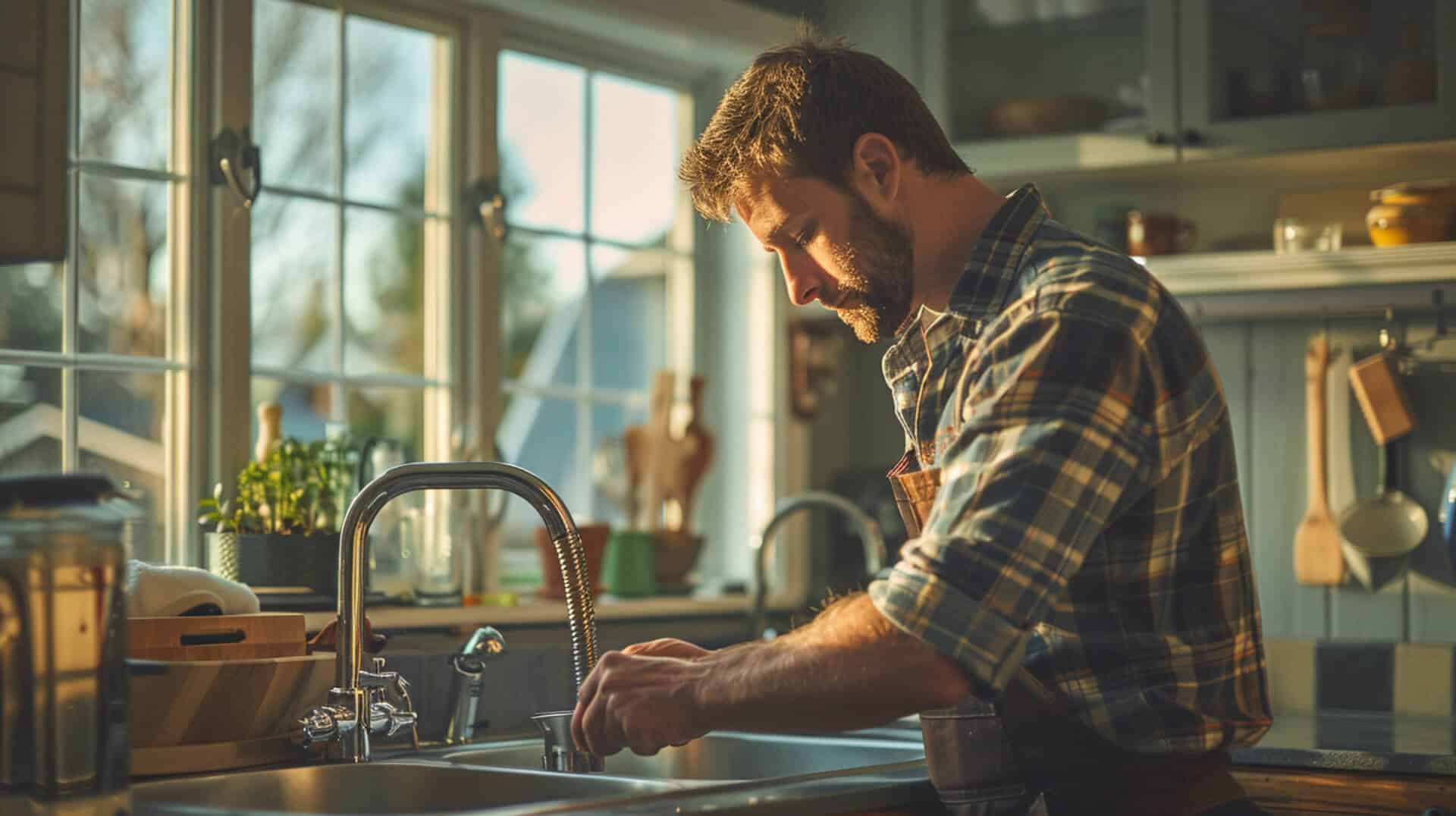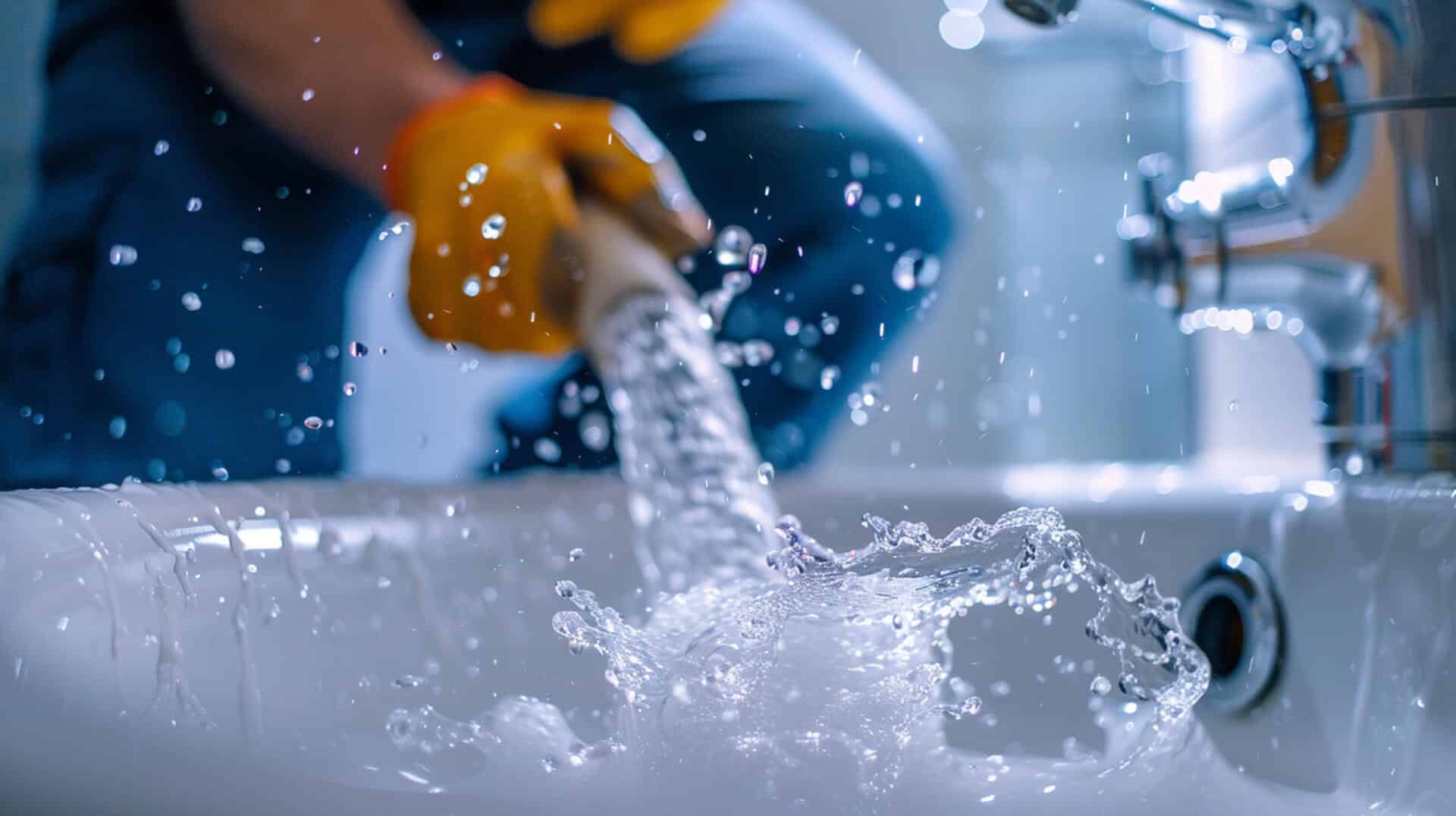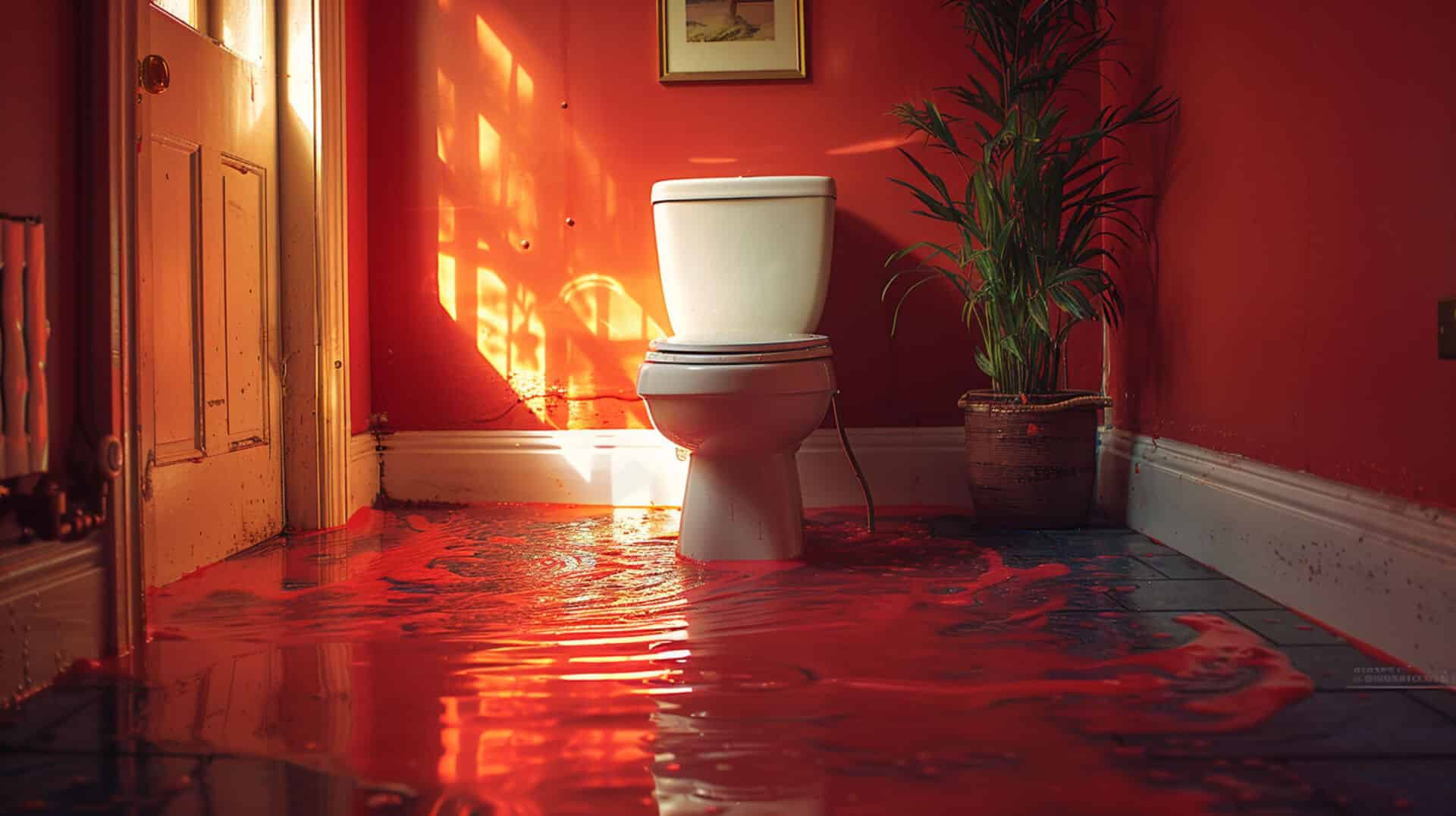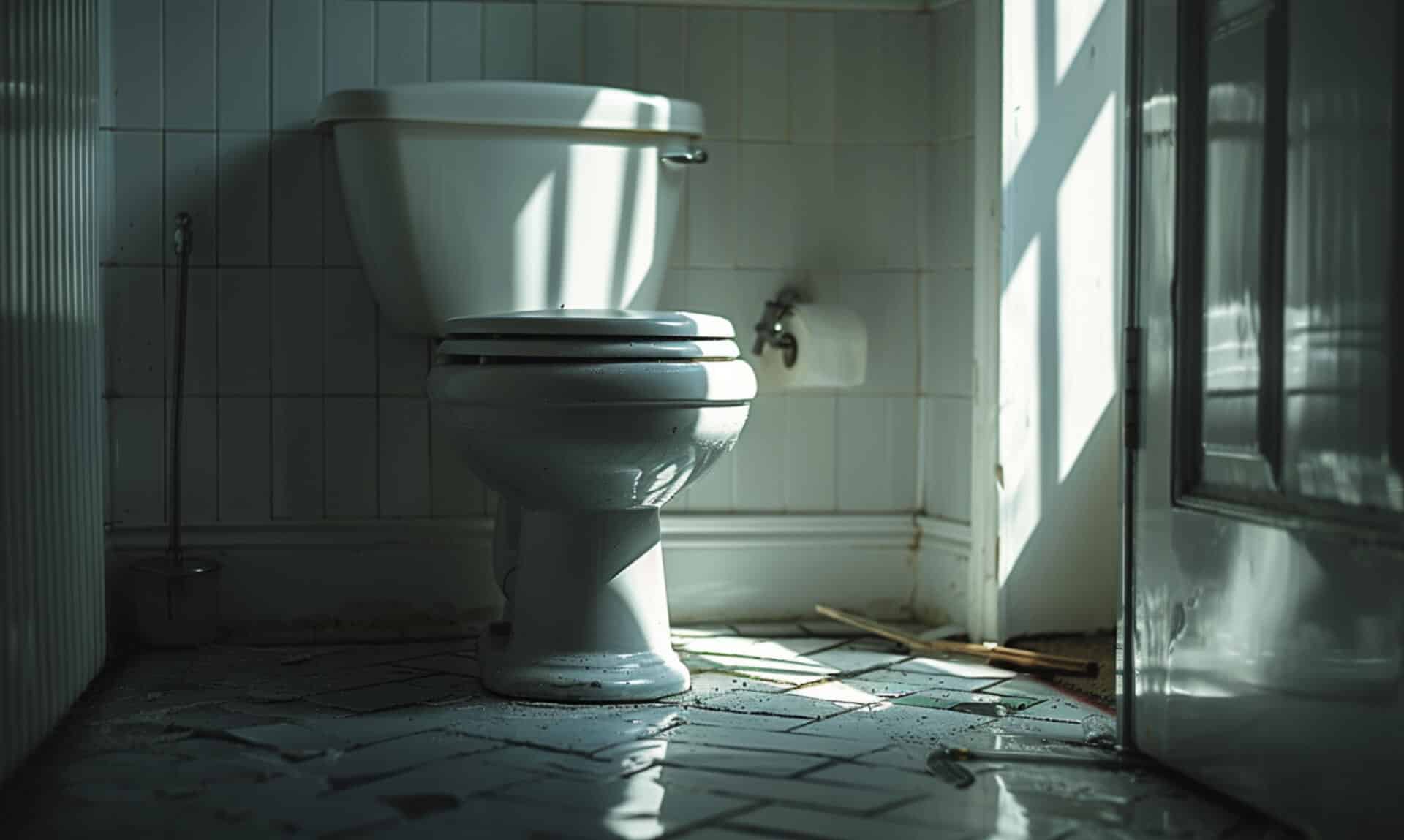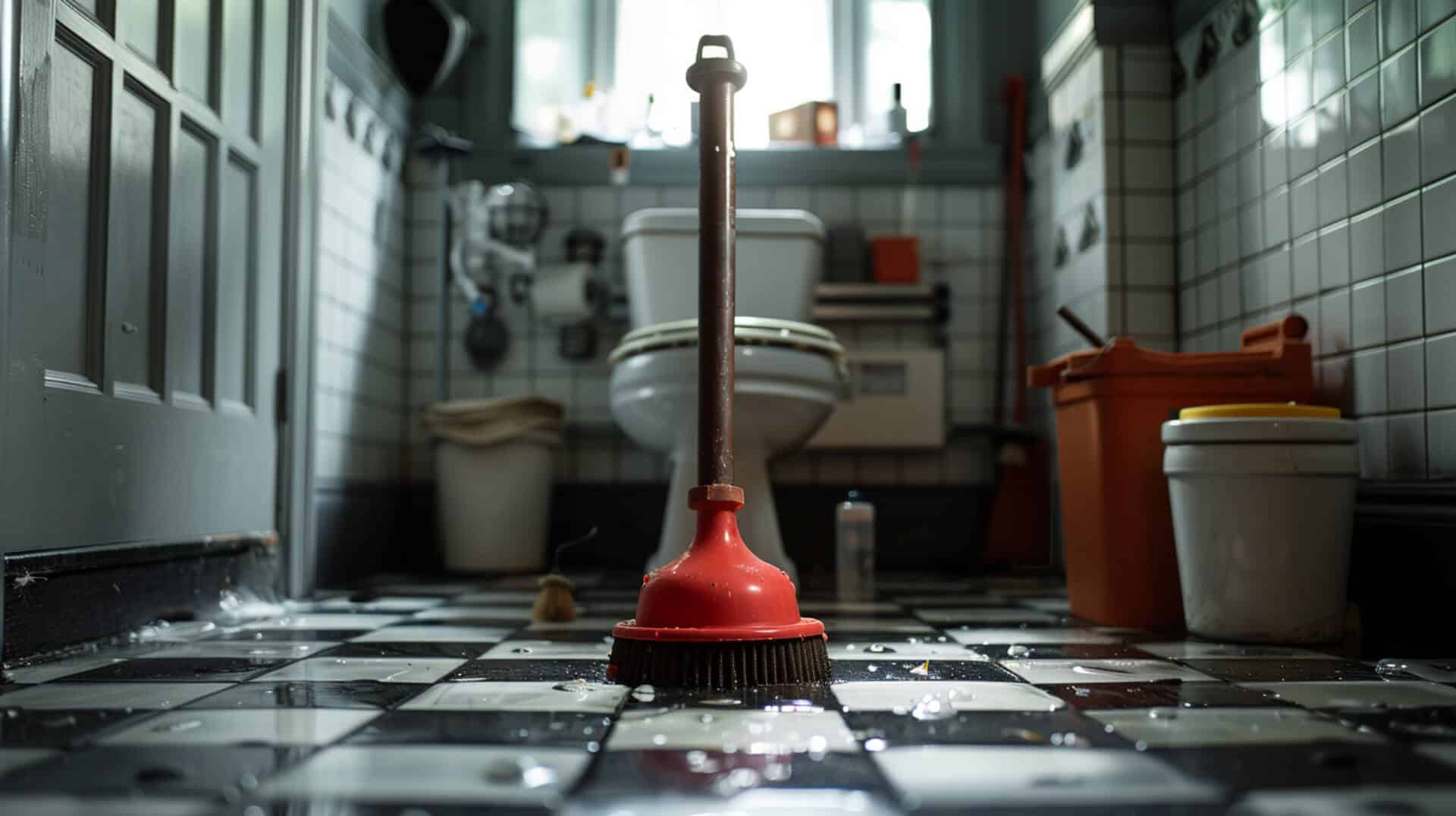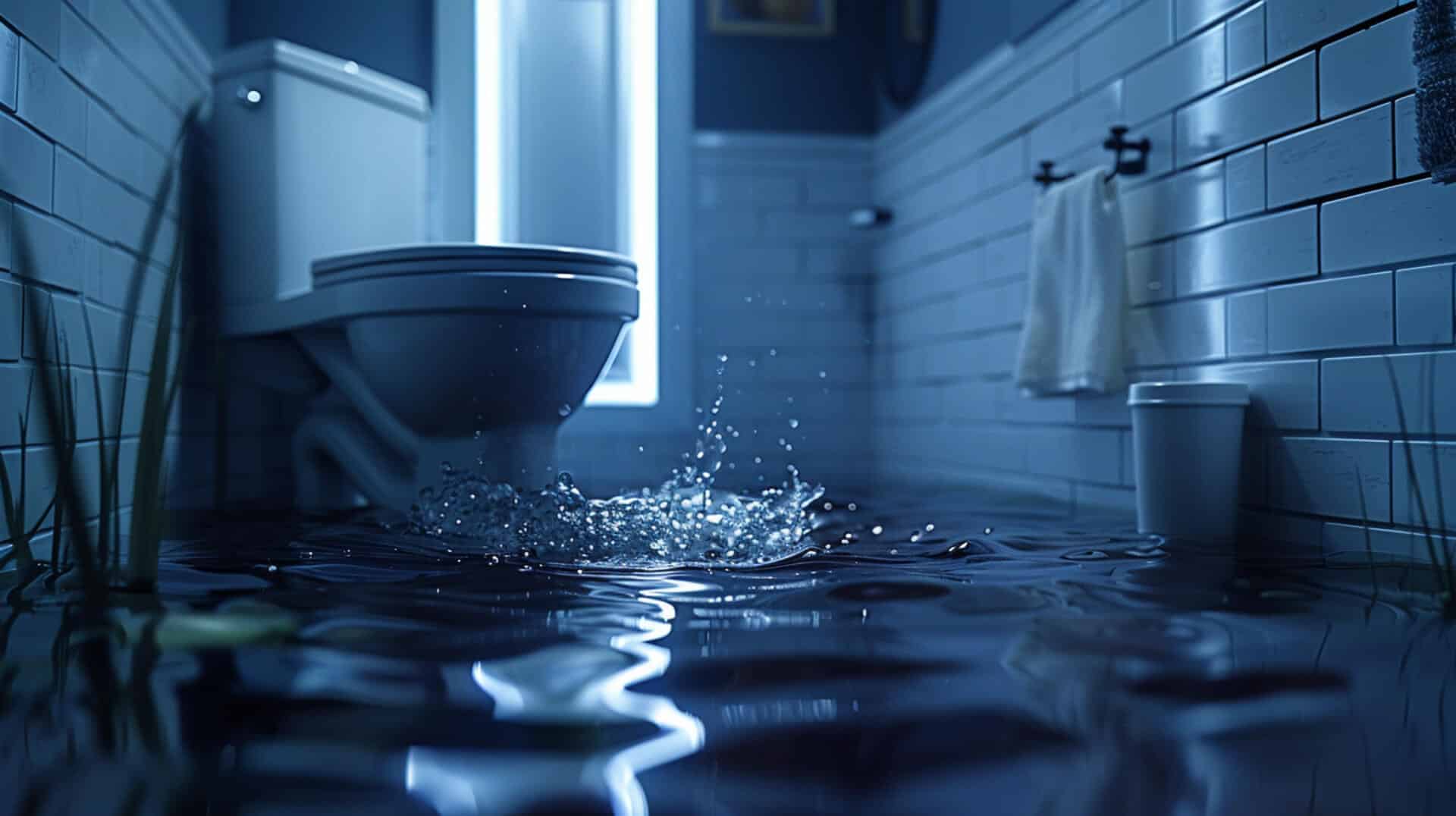 What Are The Signs That I Need A Blocked Toilet Service
What Are The Signs That I Need A Blocked Toilet Service
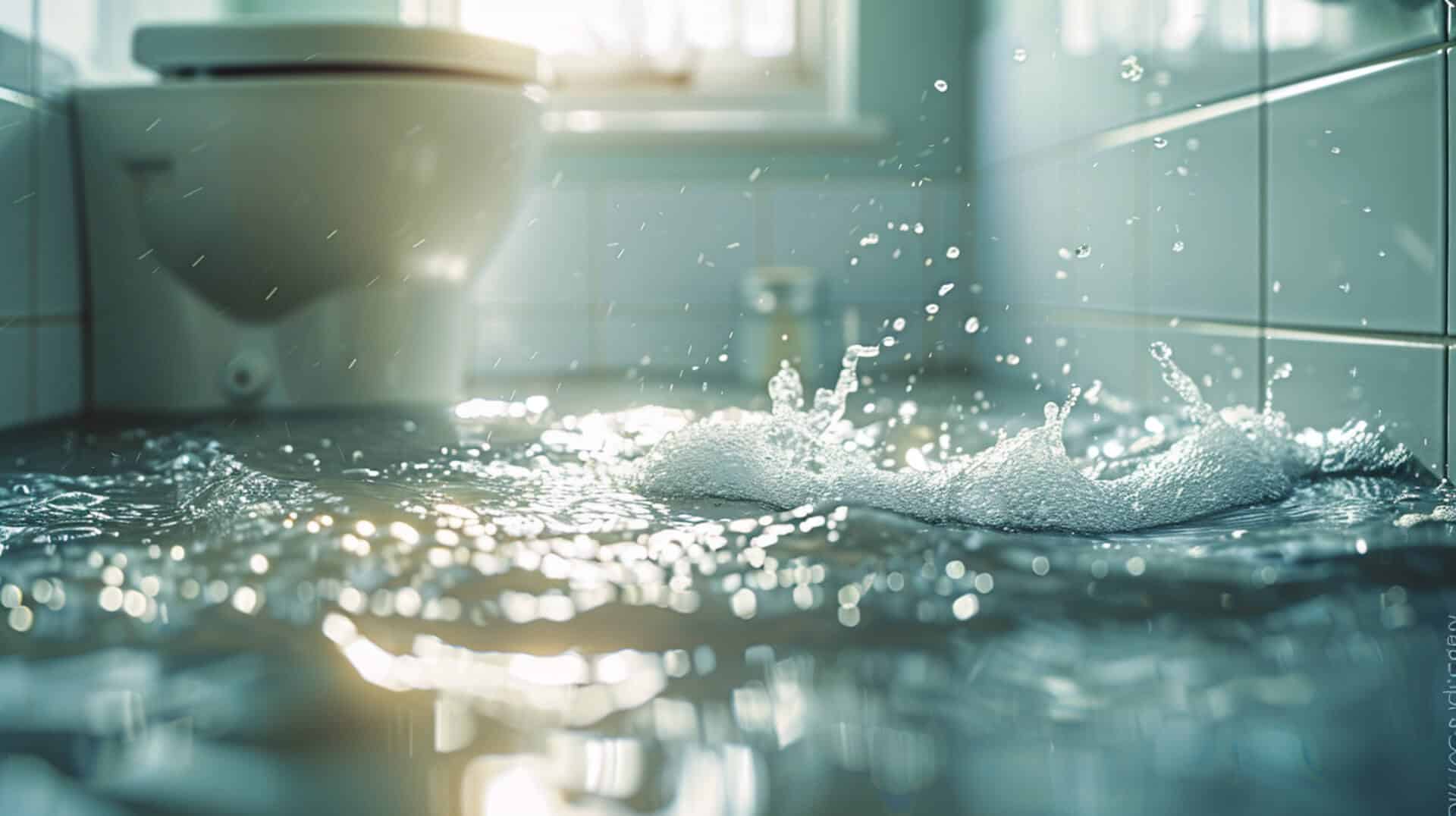
When you encounter a toilet that refuses to flush properly, it may not just be a minor inconvenience but a sign of a more serious blockage. Understanding what constitutes a blocked toilet is the first step in addressing this common household issue. A blocked toilet situation typically presents with symptoms such as slow drainage, water rising to the brink of overflowing, or unusual noises emanating from the plumbing.
Recognising the Urgency of Toilet Blockages
Promptly addressing a blocked toilet is crucial for maintaining a healthy and safe living environment. Ignoring the signs can lead to unsanitary conditions, potential water damage, and more severe plumbing complications. It’s essential to recognise the immediate signs of blockage to prevent these issues.
Seeking Professional Blocked Toilet Services
There are instances where a plunger might not suffice, and professional services are necessary. Property owners should consider calling for professional service when faced with persistent blockages, signs of sewer system backup, or when the cause of the blockage is not easily discernible. Professionals are equipped with specialised tools and expertise to resolve the issue efficiently.
Early Signs Prevention
Identifying early signs of a blocked toilet can prevent larger issues down the line. Being observant of changes in your toilet’s performance, such as fluctuations in water level or slow drainage, can help you take action before the problem escalates. Regular maintenance and awareness of what should not be flushed can also play a significant role in preventing blockages.
Recognising Immediate Signs of Blockage
When your toilet exhibits certain symptoms, it may be signalling a blockage. Being able to identify these signs promptly can prevent further complications and help you decide whether to attempt a DIY fix or call for professional services.
Visual Indicators of a Blocked Toilet
A clear sign of a blocked toilet is slow drainage. After flushing, if the water drains slower than usual or not at all, this suggests an obstruction. Another visual cue is a full or overflowing bowl, which indicates a severe blockage that prevents water from flowing through the pipes as intended.
Auditory Signs of Toilet Blockage
Unusual sounds from your toilet can also be indicative of a problem. Gurgling sounds or other anomalous noises coming from the bowl or drain after flushing are often red flags for blockages. These sounds may result from trapped air in the pipes, struggling to move past the blockage.
Water Level Fluctuations as a Blockage Indicator
Fluctuations in the water level in the toilet bowl can point to a blockage. A sudden rise in water level upon flushing, followed by a slow decrease, or water levels that are unpredictably low or high, are symptoms that should not be overlooked.
The Role of Foul Smell in Diagnosing Toilet Issues
A persistent foul smell emanating from the toilet can indicate a blockage, as waste materials may become trapped and start to decompose, releasing unpleasant odours. This symptom, particularly when combined with other signs, suggests that it’s time to investigate further or seek professional assistance.
Common Causes of Toilet Blockages
Understanding the common causes of toilet blockages can help you prevent them and determine the best course of action when they occur.
Excess Toilet Paper and Non-Flushable Items
Using too much toilet paper or flushing non-degradable items can easily lead to blockages. These materials do not break down readily in water, causing them to accumulate and obstruct the flow in your pipes.
Plumbing System Issues
Issues within the broader plumbing system, such as sewer system complications or obstructed vent pipes, can impact toilet functionality. These problems often require professional assessment and intervention.
Foreign Objects as Blockage Culprits
Foreign objects that are inadvertently or deliberately flushed down the toilet are frequent culprits of blockages. Items like toys, sanitary products, and even certain types of wipes marketed as flushable can cause significant plumbing issues.
Inadequate Flushing Power
Toilets with inadequate flushing power may not clear waste effectively, leading to blockages. This can be due to mechanical issues within the toilet itself or low water pressure in the plumbing system.
Health and Safety Risks of Ignored Blockages
Blocked toilets are more than just an inconvenience; they pose several health and safety risks that necessitate prompt action.
Potential Health Risks from Blocked Toilets
Blocked toilets can lead to an unhealthy environment in your home or facility. The risks include:
- Bacterial Infections: Stagnant water in a blocked toilet can become a breeding ground for bacteria, increasing the risk of infections.
- Gas Exposure: A blocked toilet can cause a buildup of gases like methane and hydrogen sulphide, which are not only unpleasant but also potentially harmful if inhaled in large quantities.
Environmental Hazards Linked to Toilet Blockages
Ignoring a blocked toilet can also have environmental consequences. Chemicals and waste can seep into the ground and waterways, causing contamination and affecting local ecosystems.
Importance of Immediate Action
Immediate action is recommended to mitigate these health risks. If a blockage is suspected:
- Cease using the affected toilet to prevent overflow and potential water damage.
- Attempt to clear the blockage with a plunger if it seems minor.
- Contact a professional service if the blockage persists or if you’re unsure of the cause.
Long-Term Effects of Untreated Blockages
If left untreated, toilet blockages can lead to:
- Structural Damage: Ongoing leaks may weaken structural elements of a building.
- Costly Repairs: The longer a blockage remains, the more extensive and expensive the necessary repairs can become.
DIY Solutions Versus Professional Intervention
When faced with a blocked toilet, you may wonder whether to tackle the issue yourself or call in a professional. Understanding the effectiveness of DIY methods and recognising the point at which professional intervention is required can save you time and prevent further plumbing complications.
Effectiveness of a Plunger in Resolving Blockages
A plunger can often be the first line of defence against a toilet blockage. It is most effective when:
- The blockage is minor and located close to the toilet bowl.
- You can create a good seal around the plunger to apply adequate pressure.
Utilising Household Items for Minor Blockages
For less severe blockages, certain household items can be surprisingly effective:
- Baking soda and vinegar: This combination can help dissolve organic matter.
- Hot water: Pouring hot water can break down some types of blockages, like those caused by grease.
When to Seek Professional Help
Some blockages are too stubborn for DIY methods due to:
- Their location deep within the plumbing system.
- The nature of the blockage, such as tree roots or hardened limescale.
Limitations of DIY Methods
DIY methods have their limitations, especially when:
- The blockage recurs frequently, indicating a more serious underlying issue.
- There is a risk of damaging the plumbing with aggressive DIY techniques.
In such cases, professional plumbers have the specialised equipment and expertise to diagnose and resolve the issue effectively.
Preventative Measures to Avoid Future Blockages
Proactive maintenance and proper usage are key to preventing toilet blockages. By understanding and implementing the following practices, you can maintain clear plumbing and avoid the inconvenience of blockages.
Regular Maintenance and Its Impact on Plumbing Health
Regular maintenance is essential for preventing blockages:
- Inspect internal mechanisms periodically to ensure they are functioning correctly.
- Check for early signs of blockages, such as slow drainage, and address them promptly.
Flushing Practices for Clear Plumbing
Mindful flushing practices are crucial:
- Avoid flushing non-degradable items such as wet wipes and cotton swabs.
- Use a moderate amount of toilet paper to prevent clogs.
The Importance of Educating on Proper Toilet Use
Education on proper toilet use can significantly reduce the risk of blockages:
- Inform all users, especially in shared facilities, about what should not be flushed.
- Display clear signage as a reminder of best practices.
Toilet Design and Internal Mechanisms
The design and internal mechanisms of a toilet can influence its susceptibility to blockages:
- Consider installing toilets with higher flushing power to effectively clear waste.
- Choose designs that minimise the chances of blockages, such as those with wider trapways.
The Role of Professional Blocked Toilet Services
When dealing with a blocked toilet, professional services offer specialised expertise and equipment to efficiently diagnose and resolve the issue.
Specialised Equipment Used by Professionals
Professionals are equipped with a range of tools designed for precise intervention:
- CCTV Drain Surveys: Utilised to visually inspect the interior of plumbing systems and identify blockages.
- Drain Augers and Jetters: Mechanical devices that clear blockages with a corkscrew action or high-pressure water.
Diagnosing the Root Cause of Blockages
Professionals employ a systematic approach to diagnose blockages:
- Assessment: A thorough examination of the toilet and related plumbing.
- Identification: Pinpointing the exact location and nature of the blockage.
Choosing a Reputable Service with Local Expertise
Selecting a reputable service is crucial for effective resolution:
- Local Knowledge: Professionals with local expertise are familiar with common regional plumbing issues.
- Service Excellence: Look for services recognised for their quality, such as those with industry awards.
Additional Services Offered by Plumbing Professionals
Plumbing professionals often provide a comprehensive range of services:
- Maintenance: Regular checks to prevent future blockages.
- Repairs: Addressing related plumbing issues that may contribute to blockages.
- Advice: Offering guidance on maintenance and prevention to property owners.
Environmental Considerations in Blockage Resolution
When resolving toilet blockages, it’s important to consider the environmental impact of the methods and products used. Property owners are encouraged to opt for solutions that are effective yet environmentally responsible.
Choosing Natural Products Over Chemical Cleaners
Natural unblocking methods are preferred over chemical cleaners because they:
- Reduce Environmental Harm: Chemical cleaners can contaminate water sources and harm wildlife.
- Maintain Septic System Health: Natural products are less likely to disrupt the balance of bacteria in septic systems.
Impact of Chemical Cleaners on Septic Systems
Chemical cleaners can:
- Disrupt the Ecosystem: They may kill beneficial bacteria that are essential for breaking down waste.
- Cause Corrosion: Harsh chemicals can damage plumbing over time, leading to leaks and other issues.
Benefits of Eco-Friendly Unblocking Methods
Eco-friendly methods offer several advantages:
- Safety: They are generally safer for use in homes with children and pets.
- Sustainability: They align with a commitment to preserving the environment for future generations.
Balancing Effectiveness and Environmental Impact
To balance effectiveness with environmental considerations:
- Educate Yourself: Learn about the environmental impact of various unblocking methods.
- Choose Wisely: Select products and practices that offer a compromise between efficacy and ecological responsibility.
Maintenance and Regular Checks for Optimal Functionality
Routine maintenance is a cornerstone of plumbing health, helping to prevent the inconvenience and potential damage caused by toilet blockages.
Routine Checks to Prevent Blockages
To maintain optimal functionality and prevent future blockages, consider the following routine checks:
- Inspect Flush Mechanisms: Regularly check the toilet’s flush mechanism to ensure it is operating correctly.
- Look for Early Signs: Be observant for early signs of blockages, such as slow drainage or unusual noises, and address them promptly.
Frequency of Professional Inspections
Professional inspections should be scheduled:
- Annually: At a minimum, have a professional plumber inspect your plumbing system once a year.
- More Frequently: If your property has a history of plumbing issues, consider more frequent inspections.
The Importance of Early Detection
Early detection is key to avoiding major plumbing issues because:
- It allows for timely intervention, potentially avoiding more serious damage.
- It can save costs in the long run by preventing the need for extensive repairs.
Essential Tools and Practices for Ongoing Maintenance
For ongoing maintenance, ensure you have:
- A Quality Plunger: A necessary tool for addressing minor blockages.
- Drain Cleaners: Use enzyme-based cleaners for regular maintenance to keep pipes clear without damaging the environment.
Educating Occupants on Proper Toilet Use
Educating occupants on proper toilet use is essential in preventing blockages and maintaining the plumbing system’s integrity. Misconceptions about what constitutes a flushable item often lead to improper disposal practices that can cause significant plumbing issues.
Correcting Misconceptions About Flushable Items
Many products labelled as flushable, such as certain wipes and feminine hygiene products, do not disintegrate like toilet paper and can contribute to blockages. It is important to inform users that the only items that should be flushed are human waste and toilet paper designed to break down in water.
Promoting Proper Toilet Use Through Signage
Clear signage in restrooms can serve as an effective reminder of what should not be flushed. Guidelines posted above the toilet or near the paper towel dispenser can help reinforce proper disposal habits.
Importance of Toilet Paper Type and Usage
The type of toilet paper used can affect the likelihood of blockages. Single-ply paper dissolves more easily than thicker, quilted options. Encouraging moderate use of toilet paper can also prevent clogs.
Effective Educational Approaches in Shared Facilities
In shared facilities, such as offices or apartment complexes, educational campaigns can be beneficial. This might include distributing flyers, sending emails, or holding brief informational meetings to discuss the importance of proper toilet use and the consequences of blockages.
Choosing the Right Equipment for Blockage Prevention
Selecting the appropriate tools is a critical step in maintaining your plumbing system and preventing toilet blockages.
Advantages of Different Types of Plungers
Plungers are a staple in blockage prevention and resolution. The two main types are:
- Cup Plunger: Best suited for flat surfaces, such as sinks and bathtubs.
- Flange Plunger: Designed with a flanged bottom to fit toilets, providing extra suction and effectiveness for toilet blockages.
The Value of a Drain Auger in Clearing Blockages
A drain auger, also known as a plumbing snake, is a valuable tool for more stubborn blockages that a plunger cannot clear. It consists of a long, flexible cable with a corkscrew tip that can navigate through the curves of the toilet drain to dislodge blockages.
Suitability of Equipment for Specific Blockages
Different blockages may require different tools:
- Soft Blockages: A plunger can often resolve these, such as excess toilet paper.
- Hard Blockages: A drain auger is more effective for objects or buildup that a plunger cannot displace.
Considerations for Property Managers When Purchasing Tools
Property managers should consider:
- Quality: Investing in high-quality tools can save money in the long run by avoiding frequent replacements.
- Variety: A selection of tools can prepare you for different types of blockages.
- Storage: Proper storage of these tools is necessary to ensure they are in good condition when needed.
Recognising the Signs of a Blocked Toilet
Identifying the signs of a blocked toilet is crucial for maintaining the health of your property’s plumbing system. Prompt recognition and action can prevent the inconvenience and potential damage associated with severe blockages.
Proactive Management and Property Health
Proactive management of your plumbing system, including regular maintenance and early intervention, can save significant time and expense. It ensures that minor issues can be addressed before they escalate into major problems that could impact the broader plumbing infrastructure.
Key Takeaways for Property Stewards
For property owners, business owners, and facility managers, the key takeaways include:
- Be Vigilant: Regularly check for signs of blockages.
- Educate Users: Ensure all occupants are aware of what can and cannot be flushed.
- Have the Right Tools: Equip your property with quality plungers and other maintenance tools.
- Seek Professional Help When Necessary: Recognise when a blockage is beyond DIY solutions and requires expert intervention.
Seeking Further Information and Professional Assistance
For more information on blocked toilet services or to seek professional assistance, you’re encouraged to contact local plumbing services. Many offer 24/7 emergency availability and can provide immediate help to resolve your plumbing issues.

